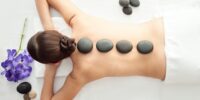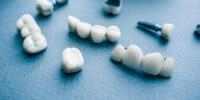Chinese Medicine Diagnosis: Understanding Pulse Reading, Tongue Diagnosis, And More
Chinese Medicine Diagnosis is a fundamental aspect of Traditional Chinese Medicine (TCM) that involves the assessment and interpretation of various diagnostic techniques to determine the underlying imbalances in the body. This article explores the principles and methods used in Chinese Medicine Diagnosis, focusing on pulse reading, tongue diagnosis, observation of facial features, and other diagnostic techniques.
The history of Chinese Medicine Diagnosis dates back thousands of years and has been influenced by various philosophical and medical theories. The principles of Chinese Medicine Diagnosis revolve around the concept of Qi, Yin and Yang, and the Five Elements theory, which guide practitioners in understanding the dynamic interactions within the body.
Pulse reading is a key diagnostic tool that involves palpating the pulse at different locations and assessing its qualities to identify imbalances. Tongue diagnosis, another prominent technique, analyzes the color, shape, coating, and other characteristics of the tongue to gather diagnostic information.
Observation of facial features, such as complexion and facial expressions, provides additional insights into one’s health. Other diagnostic techniques, including questioning, palpation, and auscultation, are also employed to obtain a comprehensive understanding of the patient’s condition.
By integrating these diagnostic findings, Chinese Medicine practitioners can develop a holistic treatment plan that addresses the root cause of the imbalance. However, it is important to acknowledge the benefits and limitations of Chinese Medicine Diagnosis, as it may not always align with Western medical concepts and may require a different approach to diagnosis and treatment.
History of Chinese Medicine Diagnosis
The history of Chinese medicine diagnosis can be traced back thousands of years, with ancient texts depicting the meticulous and intricate methods of pulse reading and tongue diagnosis, which have become integral components of this traditional healing practice.
The earliest known Chinese medical text, the Huangdi Neijing (Yellow Emperor’s Inner Canon), dating back to the 3rd century BCE, provides detailed descriptions of pulse diagnosis. It explains that the pulse can reveal information about the state of the body’s organs and meridians, helping practitioners diagnose and treat various ailments.
Tongue diagnosis, another key aspect of Chinese medicine diagnosis, is also documented in ancient texts. It involves observing the shape, color, coating, and other characteristics of the tongue to gain insights into a person’s health.
Over the centuries, Chinese medicine diagnosis has evolved and been refined, incorporating new knowledge and techniques, while still maintaining its traditional roots.
Principles of Chinese Medicine Diagnosis
The principles of Chinese Medicine Diagnosis encompass a holistic approach to health, emphasizing the interconnectedness of the body, mind, and spirit. This approach involves considering not only the physical symptoms but also the emotional and mental well-being of the individual.
Additionally, Chinese Medicine Diagnosis focuses on balancing the yin and yang energies within the body, as imbalances between these two forces are believed to be the root cause of many health issues. By restoring harmony between yin and yang, Chinese Medicine aims to promote overall wellness and prevent disease.
Holistic approach to health
An integral aspect of traditional Chinese medicine diagnosis is the incorporation of a holistic approach to health, which encompasses the interconnectedness of the mind, body, and spirit. This approach recognizes that the physical symptoms experienced by an individual are often manifestations of underlying imbalances in the body’s energy systems. By addressing these imbalances, Chinese medicine aims to restore harmony within the individual, promoting overall health and well-being.
To evoke emotion in the audience, consider the following sub-lists:
Emotional well-being:
- Chinese medicine emphasizes the importance of emotional balance in maintaining good health.
- It recognizes that emotions such as stress, anger, and sadness can disrupt the flow of energy and contribute to physical ailments.
- By addressing emotional imbalances, Chinese medicine aims to promote a sense of calm and inner peace.
Connection to nature:
- Chinese medicine views humans as an integral part of nature and believes that our health is intimately connected to the natural world.
- It encourages individuals to align their lifestyles with the rhythms of nature, such as eating seasonal foods and engaging in outdoor activities.
- This connection to nature is believed to enhance overall vitality and promote a sense of harmony with the environment.
Mind-body awareness:
- Chinese medicine recognizes the mind-body connection and the influence of thoughts and emotions on physical health.
- Practices such as meditation, acupuncture, and herbal medicine are used to cultivate mind-body awareness and promote self-healing.
- By developing a deeper understanding of one’s own body and mind, individuals can take an active role in maintaining their well-being.
Balancing yin and yang energies
Balancing yin and yang energies involves harmonizing the opposing forces within the body to achieve optimal health and well-being. According to Chinese medicine, yin represents the feminine, cold, passive, and dark aspects, while yang represents the masculine, hot, active, and light aspects.
The balance between these two energies is believed to be essential for maintaining good health. When yin and yang are in harmony, the body’s energy flows smoothly, and the individual experiences a sense of balance and vitality. However, imbalances in yin and yang can lead to various health issues.
Chinese medicine practitioners use various diagnostic methods, such as pulse reading and tongue diagnosis, to assess the state of yin and yang energies in the body. Treatment methods, including acupuncture, herbal medicine, and lifestyle adjustments, are then employed to rebalance the energies and restore health.
By addressing the imbalance of yin and yang, Chinese medicine aims to promote overall well-being and prevent illness.
Pulse Reading
Pulse reading in Chinese medicine is a diagnostic technique that involves assessing the quality and characteristics of the pulse to gain insights into the patient’s internal organ function and overall health condition. This ancient practice is based on the belief that the pulse is a reflection of the body’s Qi, or vital energy, and can provide information about imbalances or disharmonies within the body. Chinese medicine recognizes several pulse qualities, including depth, strength, rhythm, width, and speed. Each quality corresponds to a different organ system and can indicate specific conditions or imbalances. By carefully evaluating these pulse characteristics, Chinese medicine practitioners can identify patterns and make diagnoses. The following table provides a visual representation of the different pulse qualities and their corresponding organ systems:
| Pulse Quality | Corresponding Organ System |
|---|---|
| Depth | Kidneys |
| Strength | Spleen |
| Rhythm | Heart |
| Width | Liver |
| Speed | Lungs |
By analyzing the pulse, Chinese medicine practitioners can gather valuable information about a patient’s health and tailor treatment plans accordingly.
Tongue Diagnosis
Tongue examination is a diagnostic technique that involves observing the physical appearance and characteristics of the tongue in order to gain insights into the patient’s internal organ function and overall health condition. This traditional Chinese medicine practice believes that the tongue reflects the state of the body’s organs and can provide valuable information about imbalances and diseases.
During tongue diagnosis, the practitioner looks for specific signs such as color, shape, coating, moisture, and movement of the tongue.
To create a vivid image in the audience’s mind, here is a 3-item numeric list highlighting key aspects of tongue diagnosis:
-
Color: The tongue’s color can indicate different organ imbalances. For example, a pale tongue may suggest blood deficiency, while a red tongue may indicate heat or inflammation.
-
Coating: The presence, thickness, and color of the tongue coating can provide clues about digestion, nutrient absorption, and the presence of toxins.
-
Shape and Movement: Observing the shape, size, and movement of the tongue can reveal information about the body’s energy flow, internal organ function, and overall vitality.
Observation of Facial Features
Observation of facial features is another diagnostic technique that provides valuable insights into a patient’s internal organ function and overall health condition. In Chinese medicine, the face is considered a mirror of the body’s internal organs, and any changes or abnormalities in the facial features can indicate underlying imbalances or disorders.
Practitioners carefully observe various aspects of the face, such as complexion, color, texture, and the presence of lines or wrinkles. For example, a pale or yellowish complexion may suggest a deficiency in blood or qi, while a dark or purplish complexion may indicate stagnation or poor circulation. Furthermore, the presence of puffiness, swelling, or redness in specific areas of the face can provide clues about the affected organ systems.
By analyzing these facial features, Chinese medicine practitioners can gain valuable information to guide their diagnosis and treatment strategies.
Other Diagnostic Techniques
This discussion will focus on two other diagnostic techniques commonly used in Chinese medicine: observation of body posture and movement, and assessment of voice and speech patterns.
These techniques allow practitioners to gather additional information about a patient’s health and provide valuable insights into their overall well-being.
By carefully observing a patient’s body posture and movement, practitioners can identify any imbalances or abnormalities that may be contributing to their symptoms.
Similarly, assessing voice and speech patterns can provide clues about the state of a patient’s internal organs and energy flow.
Observation of body posture and movement
Body posture and movement in Chinese medicine diagnosis provide valuable insights into the patient’s overall physical condition and help practitioners understand the underlying imbalances in the body. By carefully observing the patient’s posture and movement, practitioners can gather important information about the distribution of Qi (energy) in the body and identify any areas of stagnation or blockages.
This diagnostic technique allows practitioners to assess the patient’s structural alignment, muscle tension, and overall body mechanics, which can indicate the presence of specific patterns of disharmony. Furthermore, observation of body posture and movement can reveal information about the patient’s emotional state and psychological well-being.
This holistic approach to diagnosis enables practitioners to develop a comprehensive understanding of the patient’s health and tailor treatment plans accordingly.
Assessment of voice and speech patterns
Assessing voice and speech patterns provides valuable insights into the patient’s overall health and can reveal information about their emotional and psychological well-being. In Chinese medicine, the voice is considered an important diagnostic tool. Practitioners pay attention to qualities such as volume, pitch, tone, and clarity of speech.
A weak or hoarse voice may indicate a deficiency of Qi or Yin, while a loud and forceful voice may suggest excessive Yang. Furthermore, the tone and quality of speech can provide clues about a person’s emotional state.
For example, a hesitant or stuttering speech pattern may suggest anxiety or fear, while a rapid and agitated speech may be indicative of excessive heat in the body.
By carefully observing and analyzing voice and speech patterns, Chinese medicine practitioners can gain valuable information that aids in the diagnosis and treatment of the patient.
Integration of Diagnostic Findings
Integration of diagnostic findings reveals a cohesive tapestry of information that weaves together the pulsations felt at the radial artery, the appearance and coating of the tongue, and other key indicators, allowing the skilled practitioner to paint a vivid picture of the patient’s underlying imbalances and overall health. This integration is crucial in understanding the patient’s condition and developing an appropriate treatment plan.
The diagnostic process in Chinese medicine involves analyzing various aspects of the patient’s physiology to identify patterns and imbalances. The integration of diagnostic findings includes:
-
Pulse reading: By assessing the quality, rhythm, and strength of the pulse, practitioners can gather information about the state of the internal organs and energy flow.
-
Tongue diagnosis: The appearance, color, coating, and shape of the tongue provide valuable insights into the patient’s overall health and specific imbalances.
-
Other key indicators: In addition to pulse and tongue diagnosis, practitioners may also consider other factors such as voice and speech patterns, body odor, and emotional state to further understand the patient’s condition.
By integrating these diagnostic findings, Chinese medicine practitioners can develop a comprehensive understanding of the patient’s health and tailor treatment plans accordingly.
Benefits and Limitations of Chinese Medicine Diagnosis
The integration of diagnostic findings in Chinese medicine allows practitioners to form a comprehensive understanding of a patient’s health condition. By combining information gathered from pulse reading, tongue diagnosis, and other diagnostic methods, practitioners can identify patterns and imbalances within the body.
However, it is important to acknowledge both the benefits and limitations of Chinese medicine diagnosis. One of the key advantages is its ability to provide a holistic view of health, considering physical, mental, and emotional aspects. Additionally, Chinese medicine diagnosis emphasizes prevention and early intervention, promoting overall well-being.
However, limitations exist, such as the subjectivity of diagnostic methods and the potential for misinterpretation. Furthermore, Chinese medicine diagnosis may not always align with Western medical concepts, making it challenging to integrate the two approaches.
Despite these limitations, Chinese medicine diagnosis offers valuable insights into patients’ health and can contribute to a comprehensive treatment plan.
Frequently Asked Questions
Are there any potential risks or side effects associated with Chinese medicine diagnosis?
There are potential risks and side effects associated with Chinese medicine diagnosis. These may include misdiagnosis, delay in seeking appropriate medical treatment, and adverse reactions to herbal remedies or acupuncture. Further research is needed to fully understand and quantify these risks.
How long does it typically take to see results or improvements in health conditions through Chinese medicine diagnosis?
The time it takes to see results or improvements in health conditions through Chinese medicine diagnosis varies depending on the individual and the specific condition being treated. It is recommended to follow the treatment plan as advised by a qualified practitioner.
Can Chinese medicine diagnosis be used as a standalone treatment or is it usually combined with other forms of therapy?
Chinese medicine diagnosis can be used as a standalone treatment or combined with other forms of therapy. Its effectiveness depends on the specific health condition and the individual’s response to the treatment. Further research is needed to fully understand its efficacy.
Are there any specific dietary or lifestyle recommendations that are commonly suggested based on Chinese medicine diagnosis?
Specific dietary and lifestyle recommendations are commonly suggested based on Chinese medicine diagnosis. These recommendations aim to restore balance and enhance overall well-being, often including changes in diet, exercise, sleep patterns, stress management, and the use of herbs or acupuncture.
How does Chinese medicine diagnosis differ from Western medical diagnostic methods, and are there any situations where one may be more appropriate than the other?
Chinese medicine diagnosis differs from Western medical diagnostic methods in its holistic approach and emphasis on energy imbalances. It may be more appropriate in chronic conditions or when Western medicine fails to provide a clear diagnosis.









